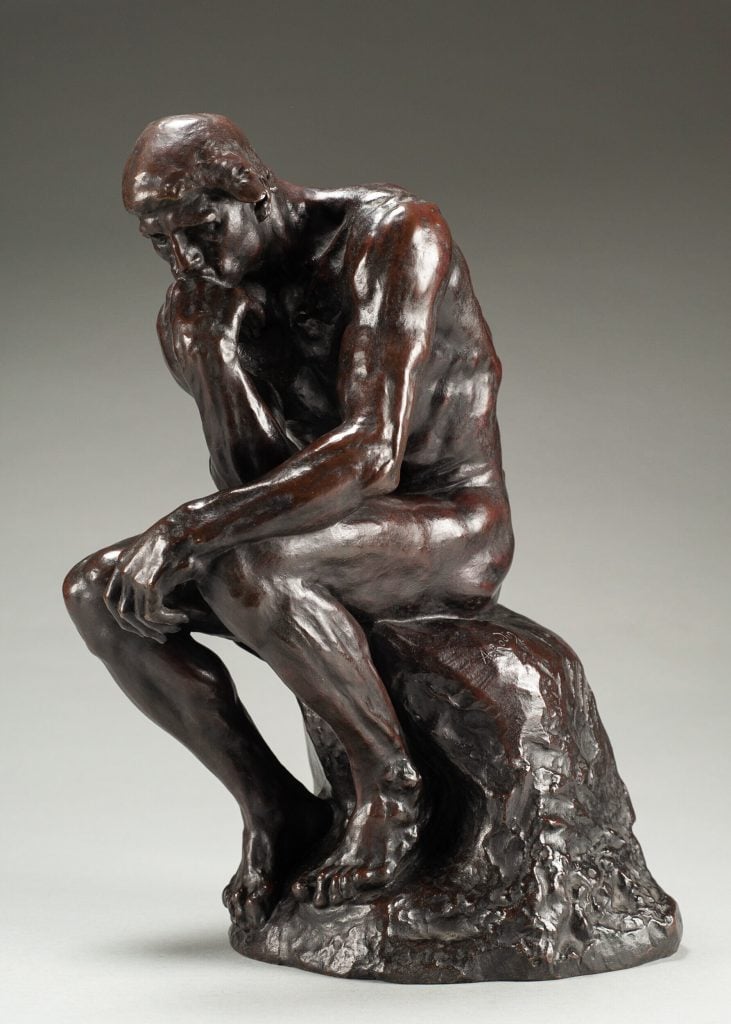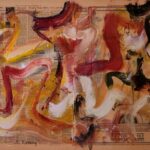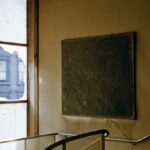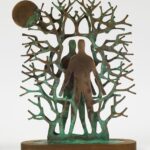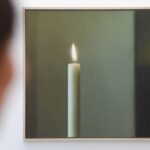Founded in 1993 by dealer Robert Bowman and specializing in fine sculpture dating from the 19th century through today, London-based gallery Bowman Sculpture is currently presenting an in-depth, monographic exhibition on the canonical French artist Auguste Rodin with “Faces and Fables: Portraiture, Great Commissions, Mythology, and Sculptural Innovations.” On view through July 31, 2024, the show brings together both iconic and lesser-known works that together speak to Rodin’s unparalleled innovation and achievement.
Helmed by Robert Bowman, who formerly spent 15 years as director of European works of art at Sotheby’s, Bowman Sculpture has become recognized as a leading resource of important historical and contemporary sculpture. Marking the occasion of the gallery’s newest exhibition, we reached out to Bowman to learn more about his fascination with sculpture, and what makes this specific presentation of work by Rodin so significant.
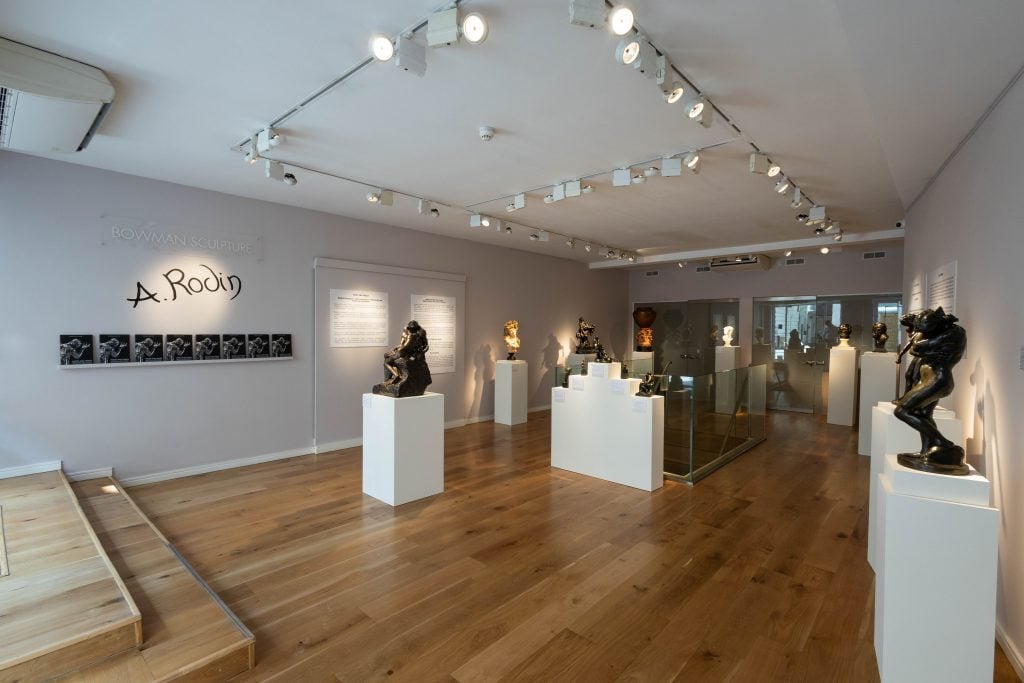
Installation view of “Faces and Fables: Rodin’s Portraiture, Great Commissions, Mythology, and Sculptural Innovations” (2024). Courtesy of Bowman Sculpture, London.
Looking back after helming Bowman Sculpture for just over three decades, what initially sparked your interest in sculpture, what about the medium specifically resonates with you?
I started out in the art world in my early 20s working at the reception counter at Sotheby’s. During this period, I saw people coming in with all sorts of artworks and watched the various experts at the time handle the works and immediately pronounce facts about them with a depth of knowledge and understanding that entranced me. It was through his initial exposure that my interest in sculpture was sparked.
While I’ve always liked two-dimensional art, I found myself naturally drawn to the tangible and dynamic nature of three-dimensional pieces. The challenge of creating something that looks great from every angle fascinated me. Getting a sculpture right from one angle is hard, getting it right from two angles is harder, but having it work in the round? Now that’s a challenge! Add in the complication of the bronze casting process, and every sculpture becomes a complex puzzle to solve.
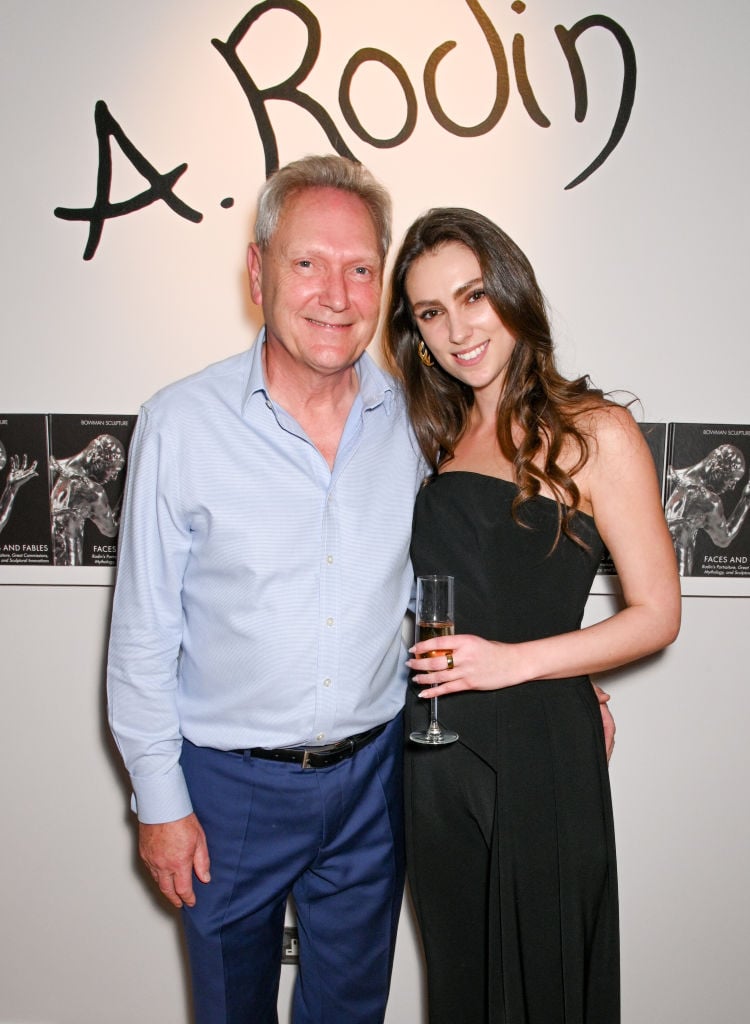
Robert Bowman and Mica Bowman at the opening of “Faces and Fables: Rodin’s Portraiture, Great Commissions, Mythology, and Sculptural Innovations” at Bowman Sculpture, London. Photo: Dave Benett/Getty Images.
Can you tell us about the exhibition, “Faces and Fables,” that the gallery is presenting? What can visitors expect to see?
The exhibition—curated entirely by my daughter Mica—is an exceptional display of over 30 of Rodin’s sculptures. It explores the artist both chronologically, starting from his early career as an assistant to Albert-Ernest Carrier-Belleuse, and thematically, engaging with his celebrated monumental sculptures like The Burghers of Calais and the Monument to Balzac. The exhibition also highlights his portraiture, mythological subjects, and innovative techniques, delving into Rodin’s practice as a sculptor of philosophy and romance.
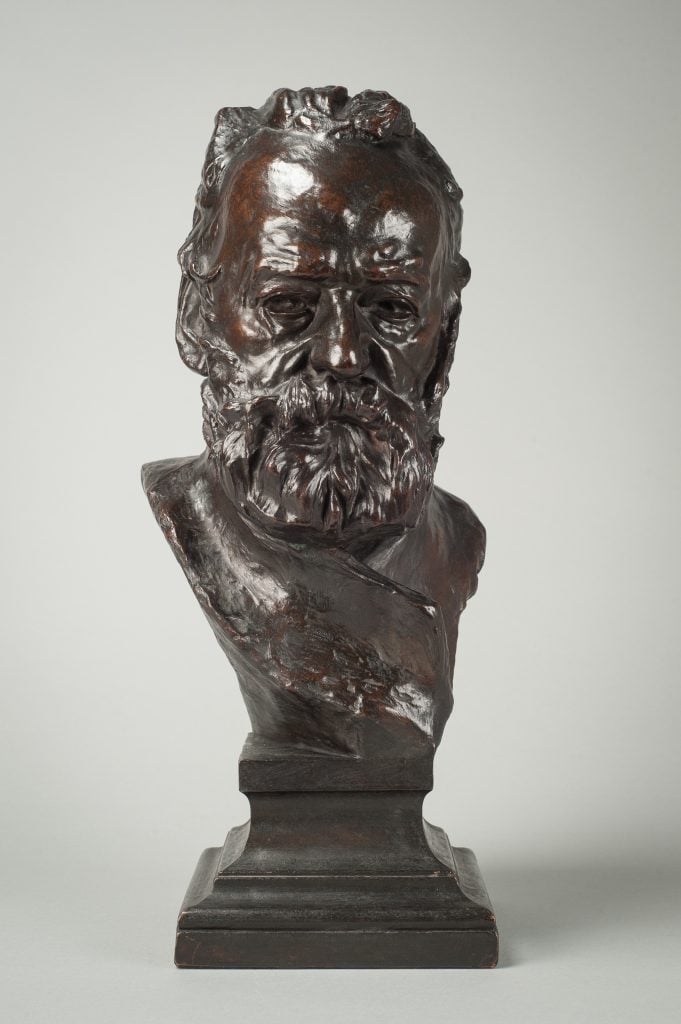
Auguste Rodin, Buste de Victor Hugo (Bust of Victor Hugo) (conceived ca. 1885, cast executed by François Rudier May/June 1897). Courtesy of Bowman Sculpture, London.
Is there one piece that you are particularly excited to be putting on view?
Well, having one of the only eight-lifetime casts of The Thinker in the 38-centimeter size is a career-high for me and, of course, offering a set of five-lifetime casts of The Burghers of Calais as a group is also something of which I am very proud. I think it’s the Vase of the Titans, Rodin’s tribute to Michelangelo with his fingerprints in the clay, truly the hand of the artist, that excites me the most. It’s a much finer example than even the one in the collection of the Musée Rodin.
Then there’s the bust of Victor Hugo, purchased by Elizabeth Putnam directly from Rodin in his studio. It is sold with a signed etching bought at the same time as the bronze and comes with an excerpt from a page removed from Frederick Lawton’s book on Rodin, with a handwritten addition describing Putnam’s experience of meeting Rodin, the story behind the creation of the work, and how she met the head of Rodin’s bronze foundry, Francois Rudier, who happened to be passing by!
A complete snapshot of history like this, offered for the first time since it was acquired in 1897, is a truly exciting thing to include in any exhibition.
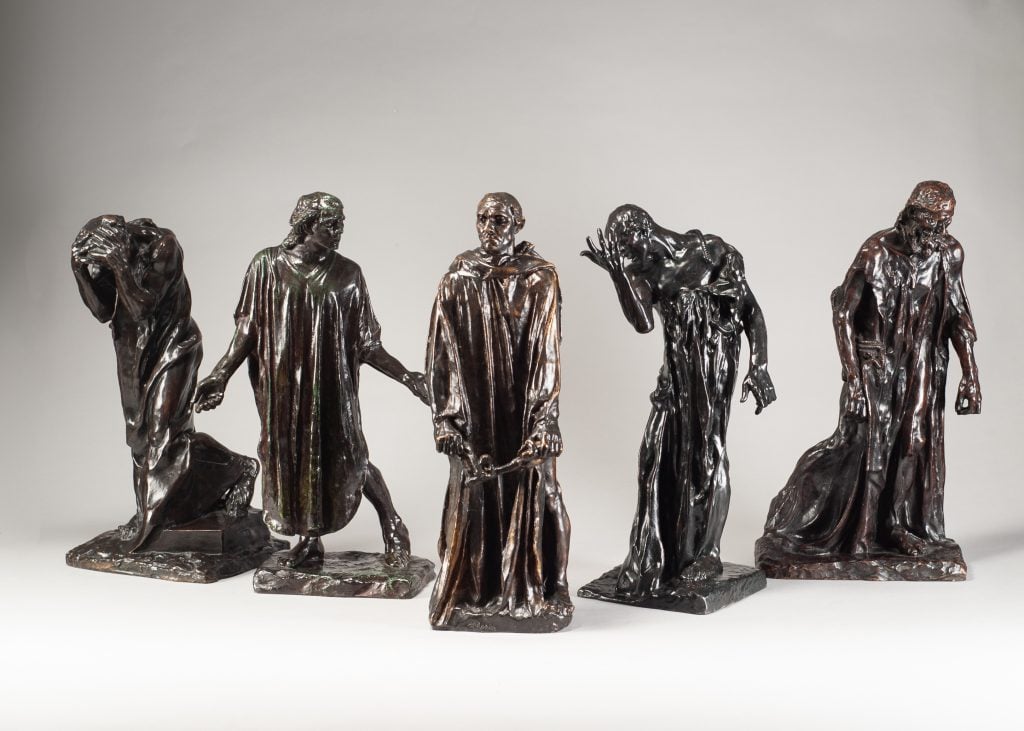
Auguste Rodin, The Burghers of Calais (conceived 1887–1895, reduction created 1900, cast 1910–1915). Courtesy of Bowman Sculpture, London.
This is the first solo show the gallery has presented of works by Rodin in more than five years—why now?
We buy and sell sculptures by Rodin all the time, so it takes a long time to assemble a great collection of works like this, that tells a story and allows us to create an exhibition that explores and explains the work of a great artist. I cannot imagine that there will ever be another exhibition of this quality of works by Rodin in a private gallery.
Of course, all these works are for sale and will hopefully find new homes, some perhaps in public collections, but many will go to private individuals and may not be available to be viewed publicly again in our lifetimes.
What is one thing you would like people to know—or they might even be surprised by—about Rodin?
The most common misconception is that all the original sculpture by Rodin is in museums. There are of course a large amount of his works in public institutions, but in reality, there is more Rodin sculpture held in private hands than in museums, and so it is still possible to own one. Some of the sculptures are seven-figure sums, but prices start at £9,500.
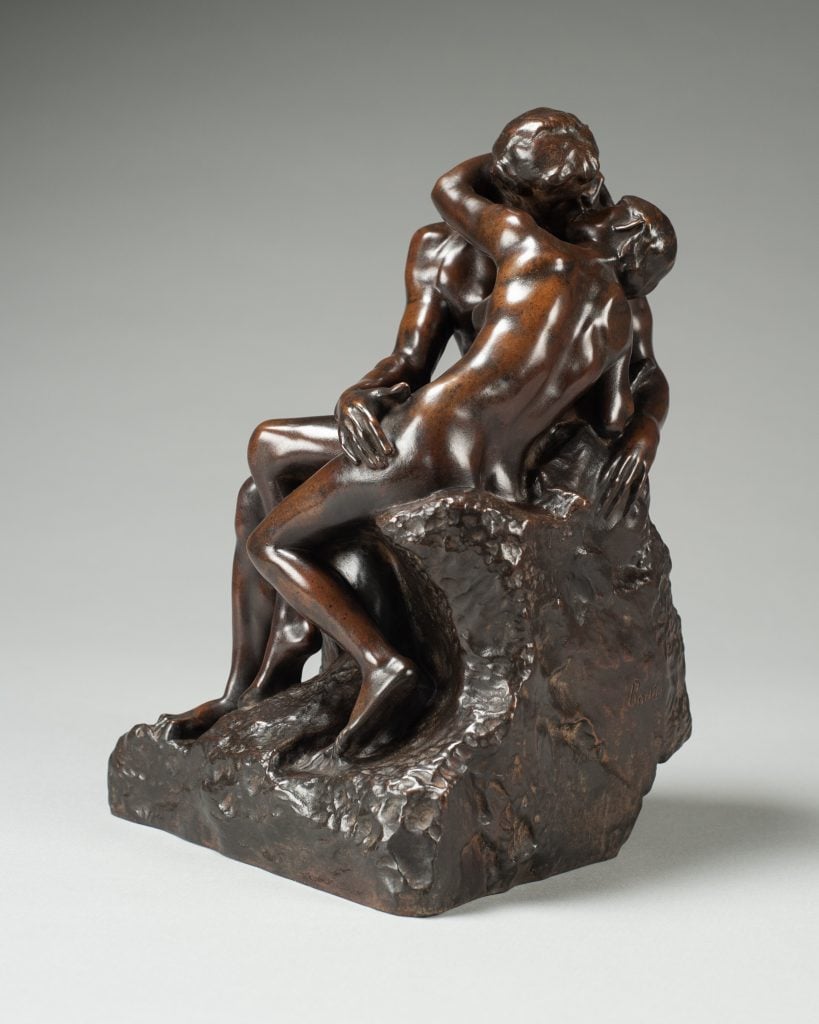
Auguste Rodin, Le baiser (The Kiss), 4th Reduction (conceived 1886, cast April 1907). Courtesy of Bowman Sculpture, London.
Have you observed any recent trends or inclinations in the artist’s market or overall interest recently?
The creation of the Comité Rodin in 2004 brought significant changes to the market for Rodin’s sculptures. As the Comité’s expertise became the market standard, buyers gained clarity about what they were purchasing, including details about where and when it was made and how many casts exist. The main aspect to consider now is the quality of the piece: Is it a beautiful, fine casting? What is its condition? How beautiful is the patina?
That’s where 40 years of experience comes into play. I see bronze sculpture as a three-dimensional print. Once you’ve established that it’s an authorized cast, the next step is to assess the quality. How well does it represent the artist’s hand? Just as a photographer relies on a skilled printer to bring their vision to life, a great sculpture depends on the quality of its casting and finishing.
Another factor influencing the art market is the investment potential of artworks. With guaranteed authenticity, collectors can view many of Rodin’s key works as excellent stores of wealth that also provide visual dividends every day. The steady increase in the value of Rodin’s sculptures has allowed me to repurchase works I sold to clients many years ago at a premium. Consequently, I have noticed that high-net-worth individuals and family offices are now incorporating high-quality art, including Rodin sculptures, into their investment portfolios. To give you some idea, one of the pieces in the exhibition, The Kiss in the 25-centimeter size, which I bought for ca. £120,000 ($153,100) 15 years ago, is now worth £320,000 ($408,400).
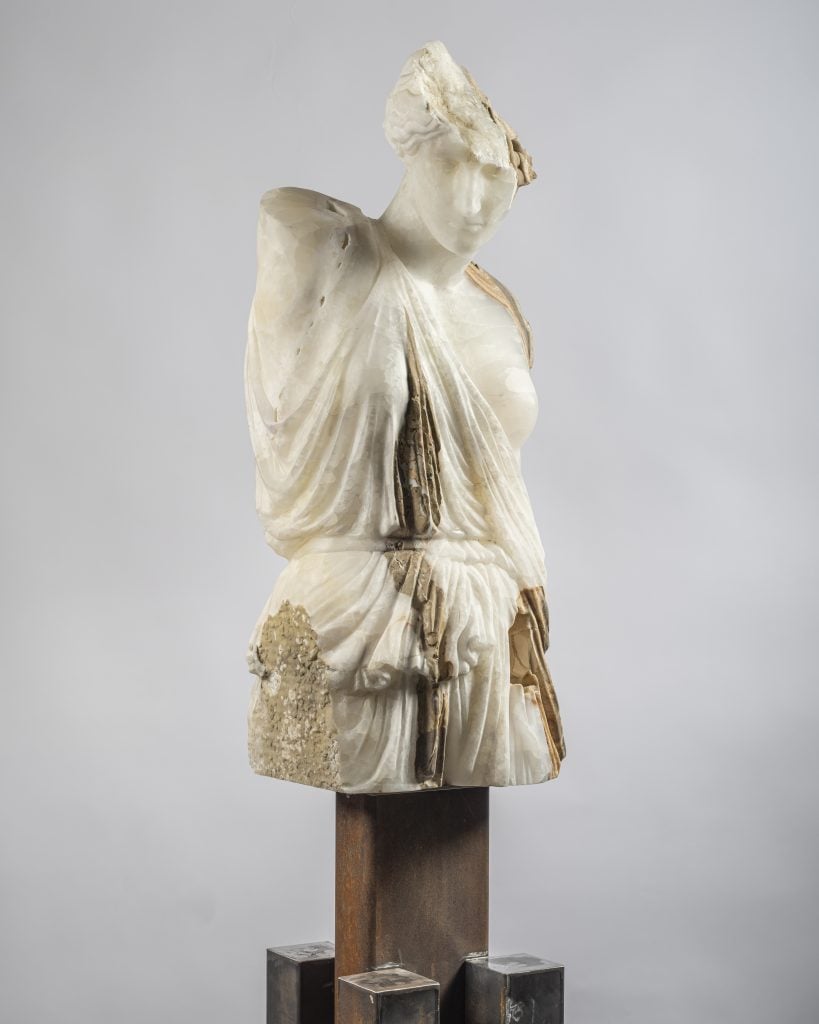
Massimiliano Pelletti, Dawn (2023). Courtesy of Bowman Sculpture, London.
Outside of Rodin, are there any other sculptors—either historical or contemporary—that have recently captured your interest?
Throughout my career, I have come to appreciate numerous sculptors, especially those who were game changers, pushing their craft to new levels and directions.
Recently, I’ve noticed a backlash against art created by machines, such as laser-cut marble sculptures or 3D-printed works. In a world increasingly dominated by computers and artificial intelligence, collectors are valuing the artisanal skills required to create something entirely from scratch. One of the main attractions is that the object is genuinely crafted by the artist’s hand, making it unique, as perfect reproduction is impossible with human input.
A prime example is the work of a talented young sculptor we’ve recently taken on at Bowman Sculpture, Massimiliano Pelletti. He selects interesting pieces of exotic stones, often with irregularities, flaws, and impurities, and hand sculpts figures inspired by celebrated classical sculptures like Venus and Apollo.
“Faces and Fables: Rodin’s Portraiture, Great Commissions, Mythology, and Sculptural Innovations” is on view at Bowman Sculpture, London, through July 31, 2024.
Follow Artnet News on Facebook:
References: this article is based on content originally published by Artnet Gallery Network on Artnet. You can read the full article here.
